
Stating that they are witnessing good demand as well as interest for Driver Status Monitoring (DSM) cameras, Vanesh Naidoo, Founder & CEO, Safe Cams Digital Eye Solutions Pvt Ltd (SCDES), mentioned, “The ability of these cameras to detect sleepy and distracted drivers and then alert them within three seconds is game-changing.” “They, as a safety solution, are highly conducive to reducing road accidents in India, where around 38 percent of all road accidents are attributed to drowsy driving,” he added. Claiming to be the first company in India to introduce DSM cameras, Naidoo stressed on fuel sensors that can connect to cameras and stream fuel information via 4G connectivity. “The driver reports that come out of this are helping companies save up to 20 percent of fuel costs,” he informed. “This,” he quipped, “is proving to be of much benefit to the fleets at a time when fuel costs have risen sharply.” Present in the aftermarket largely, SCDES is a young company. It was established in 2019 even though the groundwork began almost a year before. “The thought of entering this field was born from the high road fatalities in India,” averred Naidoo.

Cameras as road safety solutions
Pointing at the World Bank Report in 2020, which states that India accounts for 11 percent of global road accident victims while having only one percent of the world’s vehicular population, he said, “A majority of these deaths on roads are needless and can be avoided.” Of the opinion that speeding and drowsy driving account for close to 80 percent of road accidents, he explained, “The technologically advanced road safety solutions such as DSM and Advanced Driving Assistance system (ADAS) are instrumental in preventing accidents before they occur.” “The video footage available from the cameras onboard a vehicle helps analyse and hence understand its causes and find way to avoid them,” he remarked. Informing that his company specialises in two broad categories, consumer dash cams for individuals who own one or two vehicles and fleet solutions that cater to transport fleets and commercial operators, Naidoo explained, “Our Mobile Digital Video Recording (MDVR) systems can record on up to eight cameras per vehicle.”

Fleet safety solutions
The MDVR systems cannot just record on up to eight cameras per vehicle, they can store up to 4 TB of data for a longer period of reference and study. Naidoo explained, “Capable of incorporating features like GPS, Wi-Fi, 4G and various sensors (including temperature sensors in case of the carriage of perishable goods in a refrigerated container), tyre pressure sensors and fuel sensors), the MDVR systems allow live tracking and video streaming via 4G connectivity of any vehicle in the fleet.” Offering advanced technology DSM and ADAS compatible cameras that use Artificial Intelligence (AI), SCDES, said Naidoo, is in talks with bus transport companies for the DSM – with fuel transport vehicle fleets to install explosion-proof cameras and with commercial driving training institutes to help drivers understand the key dangers they face on the road and how to mitigate them. Assembling its consumer dash cameras at its facility at Pune, the company is working on localisation. Some electronic parts are not manufactured locally, according to Naidoo. The current R&D setup of SCDES tests various components of the camera and camera-based safety solutions like lenses, chipsets, low-light sensors etc. The setup also carries out tests in the area of successful configuration and suitability of usage under Indian conditions. “Our R&D setup has helped us to arrive at some unique solutions for local market requirements,” remarked Naidoo.
Traction in market segments
Finding good traction in various market segments including cold chain transportation where cameras and sensing solutions aid the maintenance of the right temperatures, SCDES has achieved good traction in various other market segments as well. “Hyundai India is using our 4G cameras in their test vehicles to ensure testing and reporting as per the guidelines. Our solutions are also being used by the armed forces and municipalities,” stated Naidoo. Revealing that India is expected to follow European Union where reports suggest DSM and ADAS cameras to be mandatory from 2026, Naidoo concluded, “So far, there are no legal requirements for cameras to be used in any vehicular segments as per the law in India. This may however change sooner than later.”
Interview: Vanesh Naidoo, Founder & CEO, Safe Cams Digital Eye Solutions Pvt Ltd.

1. Which automotive segments do the company’s products cater to?
Our camera systems can cater to nearly all major automotive segments from bus transportation, goods transportation, employee transportation, taxis, school transportation and so on. With the ability to connect temperature sensors to our devices, Safe Cams’ devices can also be used for cold chain transport companies to ensure their temperature ranges are maintained.
2. Are the company’s products found in the aftermarket or supplied to OEMs as well?
At the moment, our products are found in the aftermarket.
3. Any institutions that the products have found favour with?
Hyundai India is using our 4G cameras in their test vehicles to ensure testing and reporting is performed easily and per guidelines. The Indian Army has also purchased our dash cameras, and they are happy with the video quality of our devices. We also have supplied to international clients in Fiji and Kuwait. Safe cams also won the Dombivali-Kalyan Smart City contract to fit 4G dash cameras into the police vehicles; this is the first-time dash cameras have been fitted in police vehicles in Maharashtra.
4. How are these products important in terms of safety, security and performance of a commercial vehicle or a fleet? What kind of cost savings could a fleet or trucker look at from the use of your product?
Our Advanced AI cameras can prevent accidents before they occur – thereby reducing accidents that would happen (and the less to high costs involved therein) mostly due to drowsy driving and speeding. Around 80 percent of accidents are caused because of these two factors in India.
Cameras act as a natural deterrent to prevent theft/stealing as people know they are being watched. In the 2019 BSI & TT Club report, India accounted for 64 percent of Asia’s cargo theft. Our fuel sensors and driving behaviour reports and rankings can help save up to 20 percent of a company’s fuel costs and lead to savings of several thousand for a truck or a fleet owner. Our products have an average ROI of 120 percent in year one after buying (with the average payback period being 10 months on the cost of our solution). These savings come from a reduction in accidents (both in insurance costs and with the vehicle being able to be utilised for longer), reduction in theft and fuel savings.
5. How is the market for your products picking up post the pandemic-led disruption?
We are experiencing an increase in enquiries about our cameras and how these can make road journeys safer. I think the pandemic has made more people risk adverse or at least risk aware, and hence safety products are seen as a priority now. Given that the number of road deaths in 2019 being even higher than the total number of Covid-19 deaths in 2020, this shows and is making people realise how poor road safety scenario is in India, and the urgent need to improve the same.
6. The pain the Covid-19 pandemic caused to the company?
The Covid-19 pandemic hit us hard. We had a few deals put on hold as companies were not willing to spend on capex due to the uncertain market situation. Our consumer range could not be sold much as people were working from home and vehicles were parked off due to lockdown restrictions. Once the first wave of lockdown ended, we saw a bit of an upswing, only to be replaced with another lockdown months later. We have had to look at working capital issues and have tried to keep smaller inventory to combat the uncertainty Covid brought.
7. What kind of growth do you anticipate? Will it be in any particular product offering or spread across?
I think once people become highly aware of the advanced nature of the product and the benefits it offers, we will see a sharp growth in the dash cam market. India is the fifth-largest automobile industry in the world, but less than one percent of people use a dash camera compared to other countries like Singapore, UK and Dubai where between 10-25 percent of drivers own a dash camera. Currently, there is a huge gap in the market, which we at Safe Cams want to fill.
8. What change in the automotive landscape do you anticipate, which will provide your company stronger growth traction?
In the future, road safety will become an extremely important factor for the government and stricter enforcement of traffic rules will lead to a high adoption of dash cameras being used. New technologies like DSM that can prevent accidents will become mandatory on commercial vehicles, following the EU and America. Further, video analytics will become more and more important and 5G networks will mean devices can communicate with each other faster – and this will mean we can reduce the human involvement or reduce the reaction times to avoid an accident.
NHAI And Vertis Infrastructure Deploy Truck Mounted Attenuators For Highway Safety
- By MT Bureau
- December 27, 2025
Officials from the National Highways Authority of India (NHAI) and Vertis Infrastructure Trust have introduced Truck Mounted Attenuators (TMAs) to improve safety in highway work zones. The technology is designed to protect road workers and motorists in high-speed traffic environments.
Work zones currently represent high-risk areas on the Indian road network due to vehicle speeds and limited protective buffering. TMAs serve as a standard safety solution in the US and Europe and are now being scaled across Indian national highway projects.
A truck-mounted attenuator is an impact-absorbing crash cushion fitted to the rear of service vehicles. Its primary functions include:
- Energy Absorption: In a rear-end collision, the unit absorbs the kinetic energy of the impacting vehicle.
- Controlled Deceleration: The system brings the vehicle to a halt in a manner that reduces the risk of fatal injuries to occupants and workers.
- Track Record: Since initial testing on Indian roads in 2021, the technology has been credited with saving more than 100 lives.
The current rollout consists of 20 TMAs. Eight units were inaugurated during the launch event, which included a live demonstration and technical walkthrough. The remaining 12 units are scheduled for delivery within the next ten days.
Ankit Yadav, NHAI, said, “NHAI aims to move towards zero-fatality corridors across national highways. The adoption of technologies such as Truck Mounted Attenuators plays a critical role in improving work-zone safety and reducing avoidable loss of life.”
Dr. Zafar Khan, Joint Chief Executive Officer, Vertis Infrastructure Trust, said, “Our effort has always been to bring practical, globally proven safety solutions to Indian roads. Reaching the TMA stage is about protecting people working in some of the most vulnerable conditions on highways.”
The initiative forms part of a broader strategy to integrate safety technology into India's infrastructure growth, prioritising the reduction of accidents in active construction and maintenance zones.
- Maruti Suzuki India
- MIT Institute of Design
- Association of Designers of India at VIT
- Strate School of Design
- Hisashi Takeuchi
- Design Challenge
Maruti Suzuki India Concludes First Design Challenge For Students
- By MT Bureau
- December 26, 2025

Maruti Suzuki India, the country’s largest passenger vehicle manufacturer, has completed its first Design Challenge, a competition involving more than 400 students from 70 design institutes. Participants were tasked with designing a compact car, focusing on mobility solutions for the Indian market.
Teams from the MIT Institute of Design (Pune), the Association of Designers of India at VIT (Vellore) and the Strate School of Design (Bengaluru) secured the top three positions. The winning teams received cash prizes and six-month internships with the Maruti Suzuki design department.
The competition consisted of four evaluation rounds. The initiative is intended to provide students with exposure to the automotive industry and professional design environments.
The top 3 teams were awarded internships to work alongside company designers on future models. The next 7 teams received gift vouchers and potential internship opportunities pending further assessment. The challenge included students from both Indian and global design institutions.
Hisashi Takeuchi, Managing Director & CEO, Maruti Suzuki India, said, “India is a land of immense talent and innovation, with creativity thriving across every field. At Maruti Suzuki, we were already engaging with young start-ups to find mobility solutions. With the Maruti Suzuki Design Challenge, we expanded our open innovation efforts to provide a suitable platform to young designers where they gain real-world industry experience in automobile design. As design plays a pivotal role in shaping customers’ decision-making, it is vital to engage with young minds who bring fresh perspectives and challenge conventional thinking. The Maruti Suzuki Design Challenge reflects our commitment to cultivate automotive design talent and co-create future-ready mobility solutions with young India.”
The project forms part of the company's ‘open innovation’ strategy, seeking to integrate external perspectives into its vehicle development process.
Ola Electric Receives INR 3.66 Billion In PLI-Auto Incentive For FY2025
- By MT Bureau
- December 25, 2025
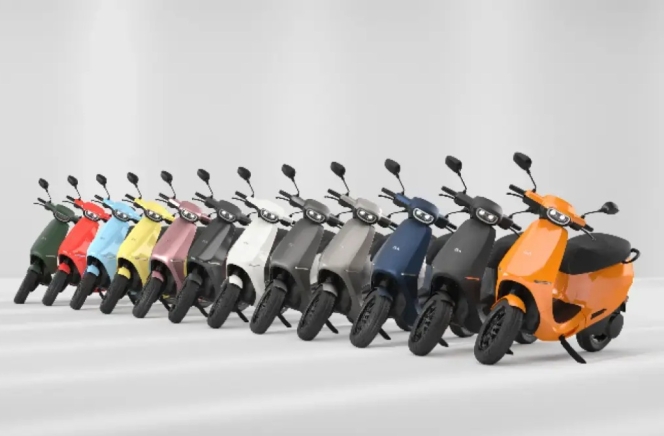
Bengaluru-based electric vehicle maker Ola Electric has received a sanction order from the Ministry of Heavy Industries for incentives totalling INR 3.66 billion. The payment is granted under the Production Linked Incentive (PLI) Scheme for Automobile and Auto Components for FY2024-25.
The incentive relates to the Determined Sales Value for the period and will be disbursed through IFCI, the financial institution appointed by the government for the scheme.
The PLI-Auto Scheme is an initiative by the Government of India designed to increase domestic manufacturing and the adoption of advanced automotive technologies. Ola Electric’s eligibility for the claim is based on its vertical integration and localisation of electric vehicle (EV) components.
“The sanction of INR 3.66 billion under the PLI-Auto Scheme is a strong endorsement of Ola Electric’s manufacturing capabilities and our commitment to building world-class EV technology in India. This incentive recognises our sustained efforts in scaling domestic production, deepening localisation, and driving innovation across the electric mobility value chain. We remain committed to supporting the Government of India’s vision of making India a global hub for advanced automotive manufacturing and clean mobility,” said the company in a statement.
bp To Sell 65% Stake In Castrol To Stonepeak For $10.1 Billion
- By MT Bureau
- December 25, 2025

UK-based energy major bp has reached an agreement to sell its 65 percent shareholding in Castrol to investment firm Stonepeak at an enterprise value of USD 10.1 billion. The deal follows a strategic review of the lubricants business and is expected to result in net proceeds for bp of approximately USD 6 billion.
The transaction includes USD 0.8 billion as a pre-payment of future dividend income on bp’s retained 35 percent stake. The valuation represents an enterprise value to EBITDA ratio of approximately 8.6x. Following the sale, a new joint venture will be formed with Stonepeak holding the majority interest and bp retaining 35 percent.
The sale is a component of bp's USD 20 billion divestment programme. To date, the company has announced or completed divestments totalling USD 11 billion.
Proceeds from the Castrol transaction will be used to reduce bp’s net debt, which stood at USD 26.1 billion at the end of the third quarter of 2025. The company aims to reach a net debt target of USD 14–18 billion by the end of 2027. bp has a two-year lock-up period on its remaining 35 percent stake, after which it has the option to sell.
Carol Howle, interim CEO, bp, said, “Today’s announcement is a very good outcome for all stakeholders. We concluded a thorough strategic review of Castrol, that generated extensive interest and resulted in the sale of a majority interest to Stonepeak. The transaction allows us to realise value for our shareholders, generating significant proceeds while continuing to benefit from Castrol’s strong growth momentum. And with this, we have now completed or announced over half of our targeted USD 20bn divestment programme, with proceeds to significantly strengthen bp’s balance sheet. The sale marks an important milestone in the ongoing delivery of our reset strategy. We are reducing complexity, focusing the downstream on our leading integrated businesses, and accelerating delivery of our plan. And we are doing so with increasing intensity – with a continued focus on growing cash flow and returns and delivering value for our shareholders.”
Anthony Borreca, Senior Managing Director, Stonepeak, said, “Lubricants are a mission-critical product, which are essential to the safe and efficient functioning of virtually every vehicle, machine, and industrial process in the world. Castrol’s 126-year heritage has created a leading market position, an iconic brand, and a portfolio of differentiated products that deliver meaningful value to its customers. We are excited to work alongside Castrol’s talented employees, coupled with bp’s continued guidance as a minority interest holder, as we support the business’s continued growth.”
The transaction is expected to complete by the end of 2026, subject to regulatory approvals. bp stated that the move allows the company to simplify its portfolio and focus its downstream operations on integrated businesses.


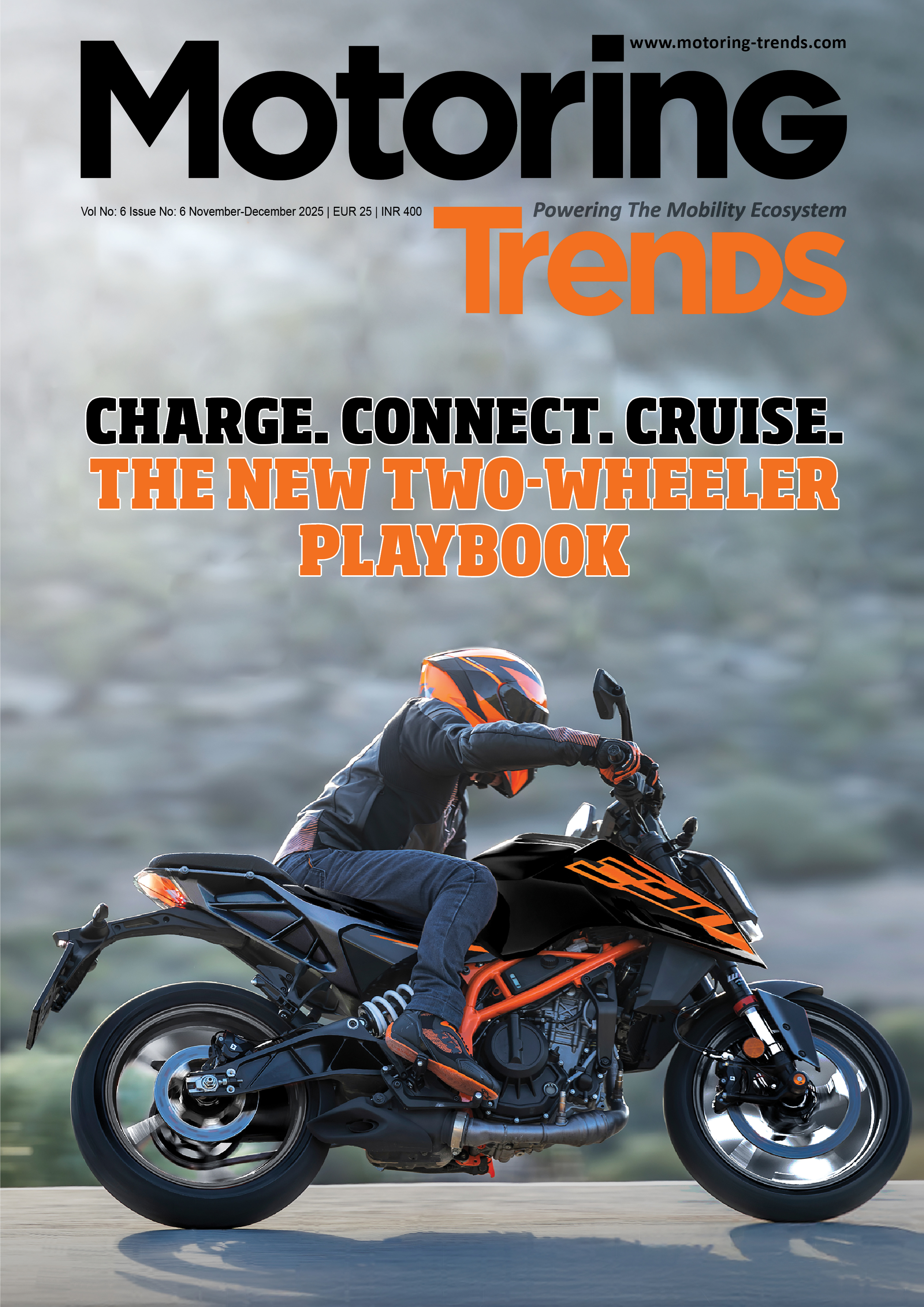
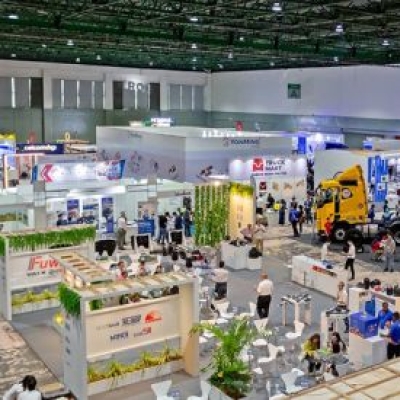
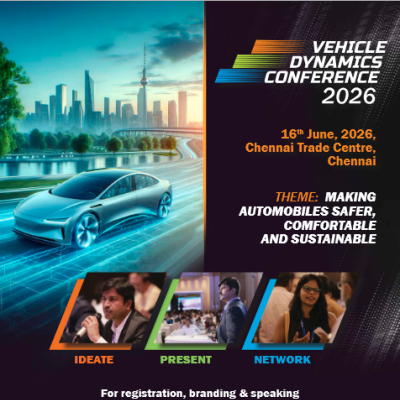
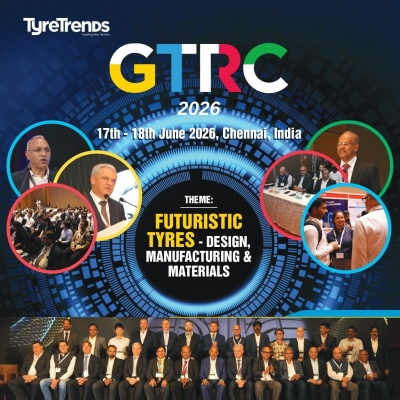
Comments (0)
ADD COMMENT